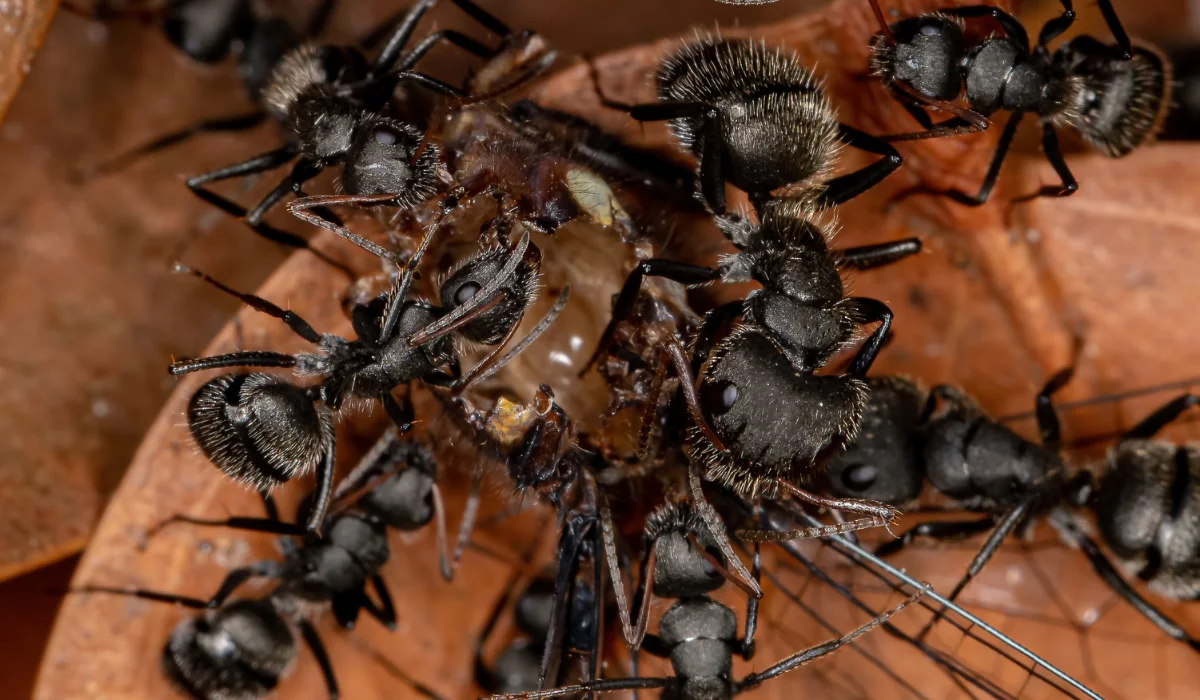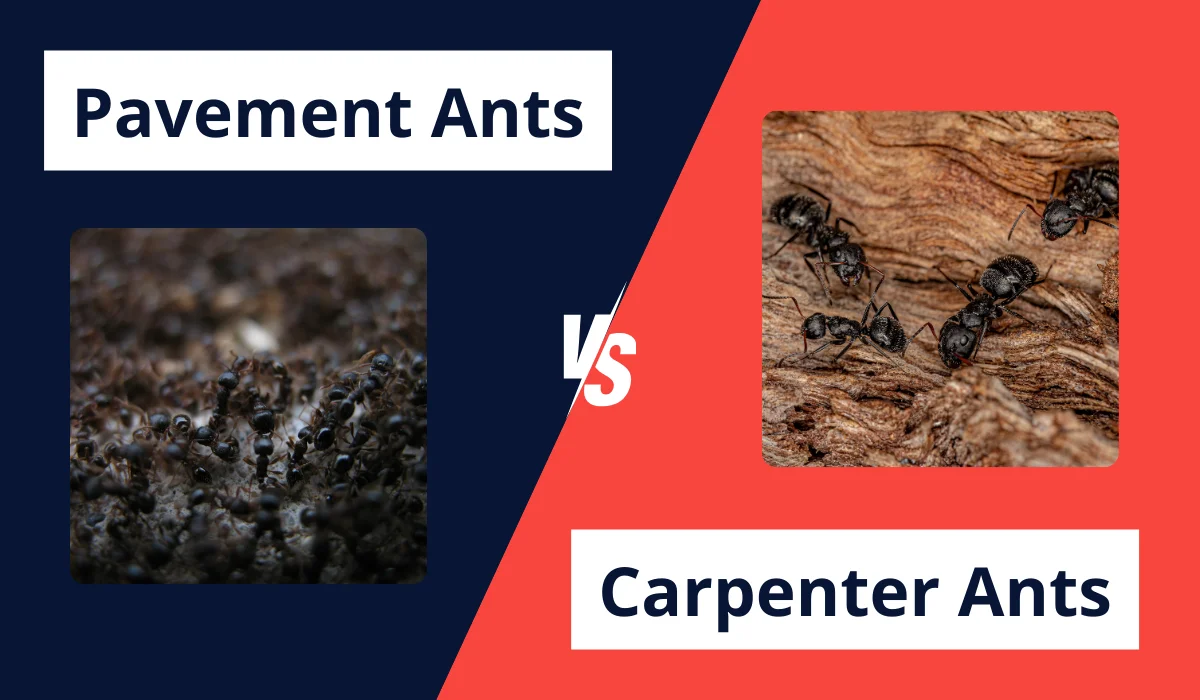
Finding ants in your home or yard can be pretty unsettling. What’s the difference between pavement ants and carpenter ants, and why does it matter to you?
Keep reading and learn how these two types of ants can affect your living space and what you can do to manage them effectively.
Key Takeaways
- Pavement ants are smaller and darker in urban areas, while carpenter ants are larger and black, nesting in wood.
- Pavement ants prefer sugary foods and frequently relocate, whereas carpenter ants favor plant juices and tunnel through wood.
- Ant infestations can be identified by looking for soil mounds, sawdust piles, and trails near structural wood or pavement cracks.
- Prevent future infestations by sealing entry points, removing food sources, and addressing moisture issues around the home.
PAVEMENT ANTS VS CARPENTER ANTS: KEY DIFFERENCES

Pavement ants and black carpenter ants are distinct species with unique physical features, behaviors, and habitats. Understanding these differences can help identify and manage them effectively.
| Physical Features | Pavement Ants | Carpenter Ants |
|---|---|---|
| Color | Dark Brown | Black |
| Size | 2.5 – 4 mm | 6 – 12 mm |
| Antennae | 12-segmented with a 3-segmented club | 12-segmented with a smooth arc |
| Thorax | Parallel lines | Smooth and rounded |
| Petiole Nodes | Two | One |
Behavior and Diet
Their behaviors and food preferences show why they may be found in different environments and affect human habitats differently.
Here are ways they differ in how they behave and what they eat:
| Behavior and Diet | Pavement Ants | Carpenter Ants |
|---|---|---|
| Food Preference | Sugary substances, grease | Plant juices, insects |
| Nesting Behavior | Relocate frequently | Tunnel in wood |
| Ant Colony Growth | Rapid | Steady but can be large |
Common Habitat
These habitat preferences highlight why you may find ant nests in odd locations around the home. Consider these areas when validating your gut instinct:
| Common Habitat | Pavement Ants | Carpenter Ants |
|---|---|---|
| Urban Areas | Common | Less common |
| Nests In | Pavement cracks, building foundations | Decaying wood, damp wooden structures |
| Visibility | Soil mounds along the edges | Small sawdust piles from tunneling |
HOW TO GET RID OF CARPENTER AND PAVEMENT ANTS
To tackle these common ants, homeowners like you can try various methods. Consider these strategies to get rid of carpenter ants and pavement ants:
- Clean up: Keep kitchen areas free of crumbs and spills.
- Seal entry points: Use caulk to seal cracks and crevices where ants might enter.
- Ant baits: Place ant baits near trails to attract and poison the ants.
- Commercial products: Apply EPA-approved products around your home.
- Regular inspection: Check for signs of ant activity regularly.
- Remove wood sources: Remove rotting or damp wood near your home.
- Pest control services: Hire professional exterminators for severe infestations.
- Pest management: Implement ongoing pest management techniques.
HOW TO PREVENT FUTURE ANT INFESTATIONS
To greatly reduce the chances of future infestations and help maintain a healthy, ant-free home, consistently follow these steps:
- Seal Entry Points: Use caulk to seal these entry points, preventing ants from entering homes in search of food.
- Remove Food Sources: Clean the kitchen by wiping counters, sweeping floors, and storing food in airtight containers.
- Properly Dispose of Trash: Take out the garbage regularly and ensure trash bins have tight-fitting lids.
- Remove Standing Water: Fix leaky pipes and ensure gutters and downspouts direct water away from the home.
- Trim Vegetation: Keep trees and shrubs trimmed away from the home to prevent worker ants from looking for new nesting sites.
- Deal with Aphids and Honeydew: Control aphid populations on plants to reduce the presence of ants that farm aphids for this sweet substance.
- Store Firewood Properly: Keep firewood stacks away from the home and off the ground, where they may establish new colonies.
- Clean Outdoors: Remove dead insects, rotting wood, and other debris around the home to prevent other ants, such as fire ants and odorous house ants.
- Driveways and Concrete Slabs: Regularly check driveways and concrete slabs for ant activity that can enter homes through tiny cracks.
IS IT TIME TO CALL THE EXPERTS?
If the common ant problem persists, consider contacting a pest control service for a free quote. They can provide professional advice and treatments to manage ant infestations effectively.
Whether you’re in Baton Rouge or New Orleans, seeking expert help should be easy. For immediate intervention for a severe infestation, let Lajaunie’s ant control specialists tailor a solution that’s right for your home.
For more information about our services, please visit our service page.
Related: Pavement Ants vs. Odorous House Ants